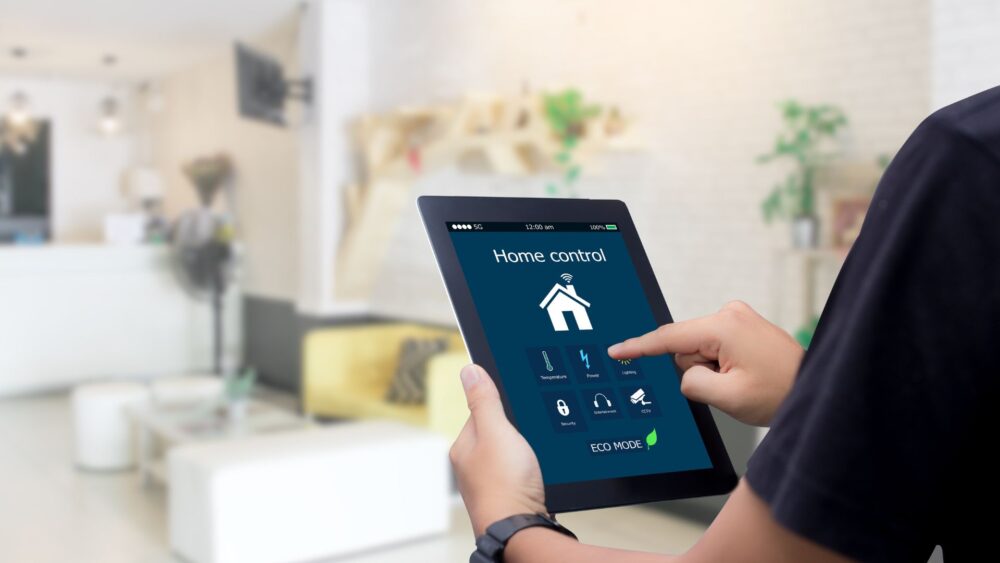With the world getting more unpredictable by the day, ensuring the safety of your family and property has never been more critical. The good news? You don’t need to break the bank for peace of mind. DIY Home Security: Affordable Ways to Protect Your Family and Property offers savvy solutions that are both budget-friendly and effective. From selecting essential components like motion detectors and smart locks to integrating cutting-edge technology seamlessly into your daily life, this guide walks you through setting up a system that works for you.
Crafting Your DIY Home Security System: A Beginner’s Guide
Understanding the Basics of Home Security
If you’re all about keeping your loved ones and home safe, rolling up your sleeves for a DIY security system could really turn things around. But before you start shopping for components, it’s important to understand the basics of what makes a good security system.
First and foremost, your system should cover all potential entry points – doors, windows, and even the garage. You’ll want a combination of sensors and alarms that will alert you (and possibly the authorities) if someone tries to break in.
Motion detectors are another key component, as they can detect movement inside your home when no one should be there. And don’t forget about outdoor security – cameras and floodlights can deter burglars before they even attempt to enter.
Selecting the Right Components for Your System
Now that you know the basics, it’s time to start selecting the components for your DIY security system. The good news is that there are plenty of options available at various price points, so you can create a system that fits your budget.
So, when you’re picking out parts, go for gadgets that won’t give you a headache to set up or use. Wireless options are often the most convenient, as they don’t require any drilling or wiring. And be sure to select components that are compatible with each other – you don’t want a mish-mash of devices that don’t work together seamlessly.
“When choosing components for your DIY home security system, consider including door and window sensors, motion detectors, security cameras, and a control panel or hub to manage the system. Look for devices that are compatible with each other and fit your budget.” – SafeWise
Integrating Smart Home Devices for Enhanced Security
So, if you’re all about leveling up your DIY security system, why not bring some smart home gadgets into the mix? Many security systems now work with popular smart home platforms like Google Assistant, Amazon Alexa, and Apple HomeKit.
With smart home integration, you can control your security devices with voice commands, automate certain actions (like turning on lights when motion is detected), and receive alerts on your smartphone when something isn’t right. This nifty trick lets you keep an eye on your place, even when you’re miles away.
| Smart Home Platform | Compatible Security Systems |
|---|---|
| Google Assistant | Nest Secure, SimpliSafe, Vivint |
| Amazon Alexa | Ring Alarm, ADT Pulse, Abode |
| Apple HomeKit | Honeywell Lyric, Abode, Arlo |
Just be sure to check compatibility before purchasing any smart home devices to ensure they’ll work with your chosen security system.
Evaluating Top DIY Home Security Systems of 2024
Honeywell vs. LifeShield: A Comparative Review
When it comes to choosing the best DIY home security system, two names that often come up are Honeywell and LifeShield. So, you’ve got two top-notch security solutions staring you in the face, but which one’s going to be your knight in shining armor?
If you’re all about getting the best bang for your buck and don’t want a headache from installation, Honeywell’s Smart Home Security System should definitely be on your radar. So, if you’re renting or watching your budget, this is a fantastic option because it skips the headache of long-term contracts and gets you started with ease.
On the other hand, LifeShield (now part of ADT) offers more robust professional monitoring options. While the upfront costs may be slightly higher, the added peace of mind may be worth it for some homeowners.
“In a head-to-head comparison, Honeywell’s Smart Home Security System edges out LifeShield by ADT in terms of affordability and ease of installation. But LifeShield takes it up a notch with their more detailed professional monitoring plans. Ultimately, the choice depends on your specific needs and budget.” – SafeWise
Ring Alarm’s Place in Today’s Market
No discussion of DIY home security systems would be complete without mentioning Ring Alarm. Now under Amazon’s wing, Ring has soared to the top of the home security world in no time flat.
Ring stands out for being wallet-friendly and seamlessly working with other gadgets from Ring, such as video doorbells and outdoor cameras. You can create a complete home security ecosystem without breaking the bank.
Moving into 2024, Ring isn’t slowing down; it’s constantly cooking up new ideas and expanding what they offer. The newest version of the Ring Alarm system is stepping up its game with cool additions like a built-in Wi-Fi 6 router and a sleek, redesigned keypad. And with optional 24/7 professional monitoring, you can have the best of both worlds – the convenience of DIY with the added security of professional oversight.
Ring Alarm is getting an upgrade in 2024 The new system will include a built-in Wi-Fi 6 router and an improved keypad design. #smarthome #homesecurity pic.twitter.com/5n8rOcOTK3— Ring (@ring) February 5, 2024
Affordable Strategies to Boost Your Property’s Safety
Simple Lock Enhancements for Windows and Doors
Boosting your home’s security doesn’t have to break the bank; simply upgrading your locks can make a huge difference. And let’s not forget about windows – they’re often the unsung heroes in keeping us safe but tend to be skipped over when beefing up security measures.
Putting pin locks on your windows is an easy weekend task that can really up your home’s security game. These locks prevent the window from being opened even if the main lock is compromised. You can find pin locks at most hardware stores for just a few dollars each.
For added security, consider adding window security film. This clear, adhesive film makes the glass harder to break, deterring would-be burglars. And don’t forget about your doors – upgrading to smart locks or installing deadbolts can provide an extra layer of protection.
Motion Detectors as a Cost-Effective Deterrent
Slipping motion detectors into your home security mix is a smart and wallet-friendly move to beef up protection. These small devices can detect movement in and around your home, triggering lights or alarms to alert you (and scare off intruders).
You can find basic motion detectors for as little as $20, making them a budget-friendly option for most homeowners. Place them near entry points, in hallways, and in other high-traffic areas for maximum effectiveness.
“One of the most cost-effective ways to boost home security is by installing motion-activated floodlights around the exterior of your house. With these lights, any would-be intruders are in for a surprise that’ll not only spook them but also give you a heads-up if something fishy’s going on. You can find decent options for under $50.” – u/Kv603 on Reddit
For even more security, consider integrating your motion detectors with your smart home system. This way, you can receive alerts on your phone when motion is detected, even if you’re away from home.
Smart Integration and Compatibility with Existing Systems
Making Your Security System Work with Google Assistant
If you’re one of the millions of households with a Google Home or Nest device, you’ll be happy to know that many DIY security systems now integrate with Google Assistant. This allows you to control your security devices with simple voice commands.
For example, you could say “Hey Google, arm my security system” when you’re leaving for the day, or “Hey Google, show me the front door camera” to see who’s at the door. You can even set up routines to automate your security based on your daily schedule.
Kicking things off, you’ll want to hunt for security systems that play nicely with Google Assistant. Some popular options include Nest Secure, SimpliSafe, and Abode. Once you have your devices set up, simply link them to your Google account in the Google Home app.
“If you already have smart home devices like Google Home or Amazon Echo, look for DIY security systems that integrate seamlessly with your existing ecosystem. This allows you to control your security devices with the same app or voice commands you use for your other smart home products.” – CNET
With Google Assistant integration, managing your home security is as easy as saying a few words. And since Google is committed to supporting the Matter smart home standard, you can feel confident that your devices will continue to work together seamlessly for years to come.
The Financial Aspect of DIY Home Security Solutions
Navigating Installation Costs and Subscription Plans
One of the top perks when you decide to go the DIY route with your home security system is how much cash you can save. Without the need for professional installation, you can avoid hefty upfront fees and get your system up and running on your own schedule.
But hey, don’t forget to also think about the costs down the line. For those of you diving into DIY systems, keep in mind that many will nudge you towards a monthly subscription if you’re eyeing perks like professional monitoring, extra cloud storage, or the convenience of mobile app control. These fees can add up over time, so be sure to factor them into your budget.
So, when you’re sifting through your options for systems, keep an eye out for those with pricing that bends and flexes to fit what you need. Some companies, like SimpliSafe and Abode, offer self-monitoring plans for a lower monthly cost. Others, like Ring Alarm, allow you to pay for professional monitoring on a month-to-month basis, so you’re not locked into a long-term contract.
| System | Upfront Cost | Monthly Cost |
|---|---|---|
| Ring Alarm | $199+ | $10-$20 |
| SimpliSafe | $229+ | $15-$25 |
| Abode | $279+ | $6-$20 |
Don’t forget to also factor in the cost of any additional devices you may want, such as cameras or smart locks. Though not exactly must-haves, these features can toss in an extra layer of both security and convenience that you might appreciate.
Maximizing the Effectiveness of Your Home Security Cameras
Choosing the Right Camera Placement for Maximum Coverage
Security cameras are a key component of any home security system, but they’re only effective if they’re placed strategically. When you’re figuring out where to put your cameras, it’s smart to focus on the spots around your house that might be easy targets.
Start with your main entry points – the front door, back door, and first-floor windows. So, we’ve dived into the favorite spots burglars love to use as their personal entry points. Place cameras high enough to get a good view of the area, but not so high that they’re out of reach for maintenance.
Next up, take a moment to scout out any spots around your home that are tough to see or often overlooked. This could include the side of your house, the backyard, or a detached garage. Aim to have overlapping coverage so that there are no gaps in your surveillance.
“When installing security cameras, make sure to place them at a height that captures a clear view of the area you want to monitor. Avoid placing cameras too low, as this can make them easy to tamper with or block. A height of 8-10 feet is usually ideal.” – Safety.com
Finally, don’t forget about the interior of your home. Place cameras in high-traffic areas like hallways and living rooms, and consider adding a camera to any room with valuable items, like a home office or safe room.
With strategic camera placement, you can keep an eye on your entire property and deter potential intruders. With cool features like catching movement, saving your videos in the cloud, and sending alerts straight to your phone, you’re always in the loop no matter where life takes you.
FAQs in Relation to “Diy Home Security: Affordable Ways to Protect Your Family and Property”
What is the cheapest way to secure your home?
Add window locks and a motion detector light. It’s low-cost but effective.
Can I make my own home security system?
Absolutely. Use smart cameras and sensors with an app for alerts. Simple yet smart.
How can I protect my home and family?
Install quality locks, use motion-sensing lights, and keep bushes trimmed. Visibility matters.
How can I keep my house safe without a security system?
Create the illusion someone is always there: use timers on lights, leave a radio on.
Conclusion
Honestly, making our homes safe doesn’t have to involve nightmarish tech setups or emptying your wallet. At the end of the day, it’s all about choosing wisely – opting for simplicity rather than getting tangled in complexity, and going for what’s practical instead of what just looks flashy. And remember, at its core, DIY home security isn’t just about gadgets; it’s about giving us back control—control over our environment, our safety, and ultimately, our peace of mind.
This journey we’ve embarked on together? It shows us that protecting what matters most can indeed come without an extravagant price tag. So here’s my invitation to you – join me in taking these straightforward yet powerful steps towards creating a safer haven for ourselves and those we cherish deeply because at Content Hacker,
We believe in empowering each other with knowledge – knowledge that ensures not only sustainability but fosters a sense of community where everyone feels secure enough to thrive.




